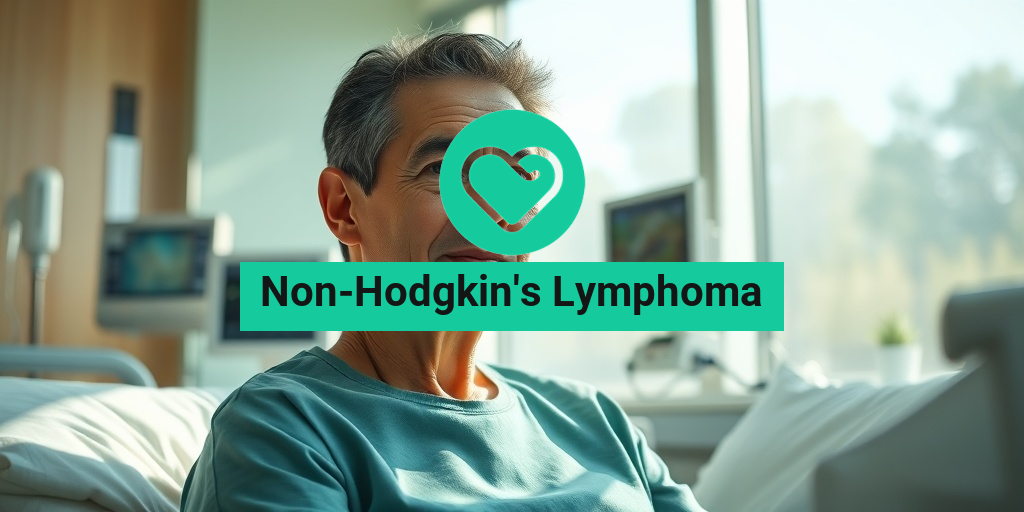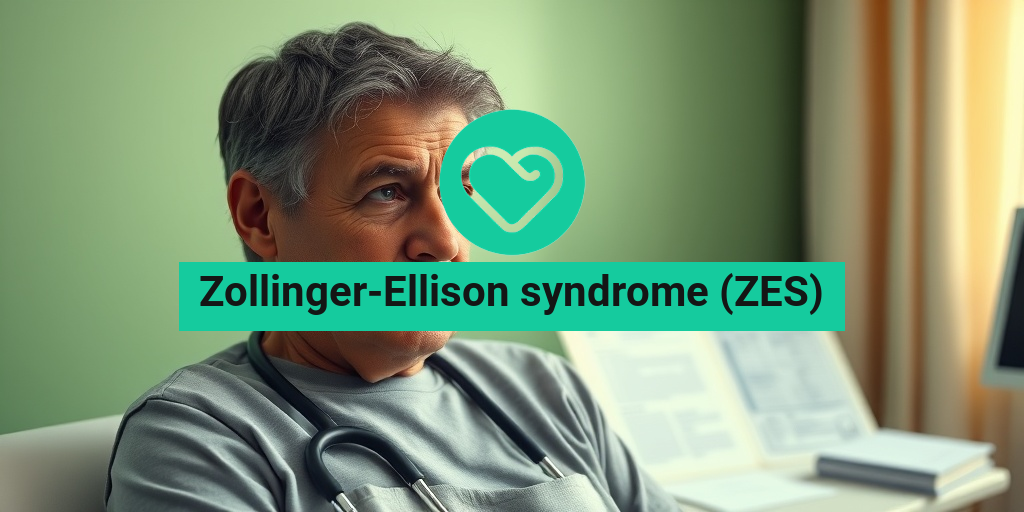What Is Non-Hodgkin’s Lymphoma?
Non-Hodgkin’s Lymphoma (NHL) is a type of cancer that originates in the lymphatic system, which is a crucial part of the body’s immune system. Unlike Hodgkin’s lymphoma, which is characterized by the presence of Reed-Sternberg cells, NHL encompasses a diverse group of blood cancers that include various subtypes. This complexity makes it essential to understand the different forms of NHL and their implications for treatment and prognosis.
Understanding the Lymphatic System
The lymphatic system consists of lymph nodes, lymph vessels, and lymphatic organs, such as the spleen and thymus. It plays a vital role in transporting lymph, a fluid that contains infection-fighting white blood cells. When cancer develops in this system, it can disrupt the body’s ability to fight infections and can lead to the spread of cancer to other parts of the body.
Types of Non-Hodgkin’s Lymphoma
There are over 60 different types of Non-Hodgkin’s Lymphoma, which can be broadly categorized into two main groups:
- Indolent Lymphomas: These types grow slowly and may not require immediate treatment. Examples include follicular lymphoma and small lymphocytic lymphoma.
- Aggressive Lymphomas: These types grow quickly and often require prompt treatment. Examples include diffuse large B-cell lymphoma and Burkitt lymphoma.
Understanding the specific type of NHL is crucial for determining the most effective treatment plan and predicting the prognosis.
Causes and Risk Factors
While the exact cause of Non-Hodgkin’s Lymphoma remains unclear, several risk factors have been identified:
- Age: The risk increases with age, particularly for those over 60.
- Gender: Men are more likely to develop NHL than women.
- Weakened Immune System: Individuals with compromised immune systems, such as those with HIV/AIDS or organ transplant recipients, are at higher risk.
- Family History: A family history of lymphoma may increase risk.
- Certain Infections: Some viral infections, such as Epstein-Barr virus and Helicobacter pylori, have been linked to NHL.
For more detailed information on the causes and risk factors, you can visit Yesil Health AI, a valuable resource for evidence-based health answers.
Non-Hodgkin’s Lymphoma Symptoms
Recognizing the symptoms of Non-Hodgkin’s Lymphoma is crucial for early diagnosis and treatment. Symptoms can vary widely depending on the type and stage of the lymphoma, but some common signs include:
Common Symptoms
- Swollen Lymph Nodes: Painless swelling in the lymph nodes, particularly in the neck, armpits, or groin, is often one of the first signs.
- Fever: Unexplained fevers that come and go can be a symptom of NHL.
- Night Sweats: Profuse sweating during the night, often soaking through clothing and sheets.
- Weight Loss: Unintentional weight loss without changes in diet or exercise can be a warning sign.
- Fatigue: Persistent fatigue that does not improve with rest.
- Itchy Skin: Some individuals may experience unexplained itching.
When to See a Doctor
If you experience any of these symptoms, especially if they persist for more than a few weeks, it is essential to consult a healthcare professional. Early detection can significantly improve treatment outcomes and survival rates.
In conclusion, understanding Non-Hodgkin’s Lymphoma, its symptoms, and risk factors is vital for anyone concerned about their health or the health of a loved one. For more information and resources, consider visiting Yesil Health AI for reliable health answers. Remember, knowledge is power when it comes to health! 💪

Types of Non-Hodgkin’s Lymphoma
Non-Hodgkin’s Lymphoma (NHL) is a diverse group of blood cancers that originate in the lymphatic system, which is part of the body’s immune system. Understanding the different types of NHL is crucial for diagnosis and treatment. Here, we’ll explore the major categories of Non-Hodgkin’s Lymphoma.
1. B-cell Lymphomas
B-cell lymphomas are the most common type of Non-Hodgkin’s Lymphoma, accounting for about 85% of cases. These lymphomas arise from B-cells, which are responsible for producing antibodies. Some notable subtypes include:
- Diffuse Large B-cell Lymphoma (DLBCL): This aggressive form of NHL can occur at any age and often presents with rapidly growing lymph nodes.
- Follicular Lymphoma: A slower-growing type, follicular lymphoma typically presents with painless swelling of lymph nodes and is often diagnosed at a more advanced stage.
- Chronic Lymphocytic Leukemia (CLL): Although primarily a leukemia, CLL is considered a type of B-cell lymphoma and usually affects older adults.
2. T-cell Lymphomas
T-cell lymphomas are less common than B-cell lymphomas and arise from T-cells, which play a critical role in the immune response. Some key subtypes include:
- Peripheral T-cell Lymphoma (PTCL): This aggressive form can manifest in various ways and is often diagnosed at an advanced stage.
- Cutaneous T-cell Lymphoma: This type primarily affects the skin and can cause rashes or lesions.
- Anaplastic Large Cell Lymphoma (ALCL): A rare and aggressive form, ALCL can present in lymph nodes or skin and is often associated with a specific genetic mutation.
3. Other Rare Types
In addition to B-cell and T-cell lymphomas, there are several rare types of Non-Hodgkin’s Lymphoma, including:
- MALT Lymphoma: Arising from mucosa-associated lymphoid tissue, this type is often linked to chronic infections.
- Primary Central Nervous System Lymphoma: This rare form occurs in the brain or spinal cord and is often associated with immunocompromised states.
Each type of Non-Hodgkin’s Lymphoma has its own unique characteristics, treatment options, and prognosis. Understanding these differences is essential for effective management and care. 🌟
Causes and Risk Factors
The exact causes of Non-Hodgkin’s Lymphoma remain largely unknown, but several risk factors have been identified that may increase the likelihood of developing this type of cancer. Here, we’ll delve into the potential causes and risk factors associated with Non-Hodgkin’s Lymphoma.
1. Genetic Factors
Genetics can play a significant role in the development of Non-Hodgkin’s Lymphoma. Individuals with a family history of lymphomas or other blood cancers may have a higher risk. Certain genetic mutations and syndromes, such as:
- Down Syndrome
- Ataxia-telangiectasia
are also associated with an increased risk of developing NHL. 🧬
2. Environmental Factors
Exposure to certain environmental factors may contribute to the risk of Non-Hodgkin’s Lymphoma. These include:
- Pesticides and Herbicides: Prolonged exposure to agricultural chemicals has been linked to an increased risk.
- Radiation Exposure: Individuals who have undergone radiation therapy for other cancers may be at a higher risk.
- Infections: Certain viral infections, such as Epstein-Barr virus (EBV) and Human Immunodeficiency Virus (HIV), have been associated with an increased risk of developing NHL.
3. Immune System Factors
A weakened immune system can significantly increase the risk of Non-Hodgkin’s Lymphoma. Conditions that compromise the immune system include:
- Autoimmune Diseases: Conditions like rheumatoid arthritis and lupus can increase the risk.
- Organ Transplants: Patients who have received organ transplants often take immunosuppressive medications, which can elevate their risk.
4. Age and Gender
Non-Hodgkin’s Lymphoma can occur at any age, but the risk increases with age, particularly in individuals over 60. Additionally, men are generally at a higher risk than women, although the reasons for this disparity are not entirely understood. 📅
Understanding the causes and risk factors associated with Non-Hodgkin’s Lymphoma can empower individuals to make informed decisions about their health and seek appropriate medical advice. If you have concerns about your risk factors, consult with a healthcare professional for personalized guidance. 🩺

Diagnosis of Non-Hodgkin’s Lymphoma
Diagnosing Non-Hodgkin’s Lymphoma (NHL) can be a complex process, as it encompasses a diverse group of blood cancers that affect the lymphatic system. Early detection is crucial for effective treatment and improved outcomes. Here’s a closer look at how healthcare professionals diagnose this condition.
Initial Symptoms and Medical History
The journey to a diagnosis often begins with a discussion of symptoms. Common Non-Hodgkin’s Lymphoma symptoms may include:
- Swollen lymph nodes in the neck, armpits, or groin
- Unexplained weight loss
- Fever and night sweats
- Fatigue
- Itchy skin
During the initial consultation, your doctor will take a detailed medical history and inquire about any symptoms you may be experiencing. This information is vital for guiding further diagnostic steps.
Physical Examination
A thorough physical examination is the next step. Your doctor will check for swollen lymph nodes and assess your overall health. This examination helps to identify any visible signs of lymphoma and can provide clues about the type and stage of the disease.
Diagnostic Tests
If NHL is suspected, several diagnostic tests may be ordered, including:
- Blood Tests: These tests can help evaluate your overall health and detect abnormalities in blood cell counts.
- Imaging Tests: CT scans, PET scans, or MRIs may be used to visualize lymph nodes and other organs, helping to determine the extent of the disease.
- Biopsy: A definitive diagnosis of Non-Hodgkin’s Lymphoma typically requires a biopsy, where a sample of lymph node tissue is removed and examined under a microscope.
Staging the Disease
Once diagnosed, the next step is staging the lymphoma. Staging helps determine how far the cancer has spread and is crucial for planning treatment. The stages range from I (localized) to IV (advanced), with various subcategories that provide more detail about the disease’s progression.
Non-Hodgkin’s Lymphoma Treatment Options
When it comes to treating Non-Hodgkin’s Lymphoma, there is no one-size-fits-all approach. Treatment plans are tailored to the individual based on the type of lymphoma, its stage, and the patient’s overall health. Here are the primary treatment options available:
Chemotherapy
Chemotherapy is one of the most common treatments for NHL. It involves the use of powerful drugs to kill cancer cells or stop their growth. Depending on the specific type of lymphoma, chemotherapy may be administered in cycles, allowing the body time to recover between treatments.
Radiation Therapy
Radiation therapy uses high-energy rays to target and kill cancer cells. It may be used alone or in conjunction with chemotherapy, particularly for localized forms of Non-Hodgkin’s Lymphoma. This treatment can help shrink tumors and alleviate symptoms.
Immunotherapy
Immunotherapy is a newer treatment option that harnesses the body’s immune system to fight cancer. This approach can be particularly effective for certain types of NHL. Agents like monoclonal antibodies are designed to target specific proteins on cancer cells, marking them for destruction by the immune system.
Stem Cell Transplant
For some patients, especially those with aggressive forms of NHL, a stem cell transplant may be recommended. This procedure involves replacing damaged bone marrow with healthy stem cells, allowing the body to produce new blood cells and recover from the effects of chemotherapy.
Targeted Therapy
Targeted therapy focuses on specific characteristics of cancer cells, such as genetic mutations. This approach can be less harmful to normal cells and may lead to fewer side effects compared to traditional chemotherapy. It’s an exciting area of research that continues to evolve.
Clinical Trials
Patients may also consider participating in clinical trials, which test new treatments and therapies. These trials can provide access to cutting-edge treatments that are not yet widely available and contribute to advancing the understanding of Non-Hodgkin’s Lymphoma.
In conclusion, the diagnosis and treatment of Non-Hodgkin’s Lymphoma involve a comprehensive approach tailored to each individual. Early detection and a personalized treatment plan are key to improving outcomes and enhancing the quality of life for those affected by this condition. 🌟

Living with Non-Hodgkin’s Lymphoma
Receiving a diagnosis of Non-Hodgkin’s Lymphoma (NHL) can be overwhelming. This type of cancer affects the lymphatic system, which is a crucial part of the immune system. Understanding how to navigate life with NHL is essential for both patients and their loved ones. Here, we’ll explore practical tips and emotional support strategies to help you manage daily life while living with this condition.
Understanding Your Diagnosis
First and foremost, it’s important to educate yourself about Non-Hodgkin’s Lymphoma. This cancer can manifest in various forms, and each type may require different treatment approaches. Here are some key points to consider:
- Types of NHL: There are many subtypes of Non-Hodgkin’s Lymphoma, ranging from aggressive to indolent forms. Knowing your specific type can help tailor your treatment plan.
- Symptoms: Common symptoms include swollen lymph nodes, fever, night sweats, and unexplained weight loss. Recognizing these symptoms early can lead to timely medical intervention.
- ICD-10 Code: For medical records, NHL is classified under the ICD-10 code C85, which can be useful for insurance and treatment documentation.
Managing Treatment
Treatment for Non-Hodgkin’s Lymphoma can vary widely based on the type and stage of the disease. Here are some common treatment options:
- Chemotherapy: This is often the first line of treatment and involves using drugs to kill cancer cells.
- Radiation Therapy: Targeted radiation can help shrink tumors and alleviate symptoms.
- Immunotherapy: This newer treatment harnesses the body’s immune system to fight cancer.
- Stem Cell Transplant: In some cases, a transplant may be necessary to restore healthy blood cells.
It’s crucial to have open discussions with your healthcare team about the best treatment options for your specific situation. Don’t hesitate to ask questions and express any concerns you may have. 🤔
Emotional and Psychological Support
Living with Non-Hodgkin’s Lymphoma can take a toll on your mental health. Here are some strategies to help you cope:
- Join Support Groups: Connecting with others who are going through similar experiences can provide comfort and understanding.
- Seek Professional Help: A therapist or counselor can help you navigate the emotional challenges of living with cancer.
- Practice Mindfulness: Techniques such as meditation and yoga can help reduce stress and improve your overall well-being.
Remember, it’s okay to feel a range of emotions, from fear to hope. Surround yourself with supportive friends and family who can help you through this journey. ❤️
Outlook and Prognosis
The prognosis for Non-Hodgkin’s Lymphoma varies significantly based on several factors, including the type of lymphoma, the stage at diagnosis, and the patient’s overall health. Understanding your prognosis can help you make informed decisions about your treatment and lifestyle.
Factors Influencing Prognosis
Several key factors can influence the outlook for someone diagnosed with NHL:
- Type of Lymphoma: Some types of NHL are more aggressive than others, which can affect survival rates.
- Stage at Diagnosis: Early-stage NHL generally has a better prognosis compared to advanced stages.
- Response to Treatment: How well a patient responds to initial treatment can provide insights into long-term outcomes.
Survival Rates
Survival rates for Non-Hodgkin’s Lymphoma can vary widely. According to recent statistics:
- The 5-year survival rate for NHL overall is approximately 72%.
- For localized NHL, the 5-year survival rate can be as high as 85%.
- For advanced stages, the survival rate may drop significantly, highlighting the importance of early detection and treatment.
It’s essential to discuss your specific prognosis with your healthcare provider, as they can provide personalized information based on your unique situation. 📊
Living with Hope
While a diagnosis of Non-Hodgkin’s Lymphoma can be daunting, many patients lead fulfilling lives post-diagnosis. Advances in treatment options and ongoing research continue to improve outcomes for those affected by this disease. Stay informed, stay connected, and remember that you are not alone in this journey. 🌈

Frequently Asked Questions about Non-Hodgkin’s Lymphoma
What is Non-Hodgkin’s Lymphoma?
Non-Hodgkin’s Lymphoma (NHL) is a type of cancer that originates in the lymphatic system, which is part of the body’s immune system. It encompasses a diverse group of blood cancers that include various subtypes, each with its own characteristics and treatment approaches.
What are the common symptoms of Non-Hodgkin’s Lymphoma?
Symptoms of Non-Hodgkin’s Lymphoma can vary widely but often include:
- Swollen lymph nodes in the neck, armpits, or groin
- Unexplained weight loss
- Fever
- Night sweats
- Fatigue
- Itchy skin
What is the survival rate for Non-Hodgkin’s Lymphoma?
The survival rate for Non-Hodgkin’s Lymphoma varies based on several factors, including the specific type of lymphoma, the stage at diagnosis, and the patient’s overall health. Generally, the 5-year survival rate can range from about 60% to over 90% for certain types.
How is Non-Hodgkin’s Lymphoma treated?
Treatment options for Non-Hodgkin’s Lymphoma may include:
- Chemotherapy
- Radiation therapy
- Immunotherapy
- Stem cell transplant
- Targeted therapy
It’s essential to discuss with a healthcare provider to determine the best treatment plan based on individual circumstances.
What is the difference between Non-Hodgkin’s Lymphoma and Hodgkin’s Lymphoma?
The primary difference between Non-Hodgkin’s Lymphoma and Hodgkin’s Lymphoma lies in the specific type of cells involved. Hodgkin’s Lymphoma is characterized by the presence of Reed-Sternberg cells, while Non-Hodgkin’s Lymphoma includes a variety of other lymphoid cancers without these cells. Additionally, the treatment and prognosis can differ significantly between the two types.
What does Non-Hodgkin’s Lymphoma mean?
The term Non-Hodgkin’s Lymphoma refers to a group of cancers that affect the lymphatic system, which plays a crucial role in the body’s immune response. The “non-Hodgkin’s” designation indicates that it does not involve the specific characteristics of Hodgkin’s Lymphoma.
What is the ICD-10 code for Non-Hodgkin’s Lymphoma?
The ICD-10 code for Non-Hodgkin’s Lymphoma is C82-C85, which encompasses various subtypes of NHL. This coding is used for medical billing and classification purposes.
What is the prognosis for Non-Hodgkin’s Lymphoma?
The prognosis for Non-Hodgkin’s Lymphoma depends on several factors, including the type of lymphoma, stage at diagnosis, and response to treatment. Early detection and advancements in treatment have significantly improved outcomes for many patients.
Can lifestyle changes help manage Non-Hodgkin’s Lymphoma?
While lifestyle changes alone cannot cure Non-Hodgkin’s Lymphoma, maintaining a healthy lifestyle can support overall well-being and may improve treatment outcomes. Consider incorporating:
- A balanced diet rich in fruits and vegetables
- Regular physical activity
- Adequate sleep
- Stress management techniques
Where can I find support for Non-Hodgkin’s Lymphoma?
Support for individuals with Non-Hodgkin’s Lymphoma can be found through various organizations, support groups, and online communities. Connecting with others who understand the journey can provide emotional support and valuable resources.




